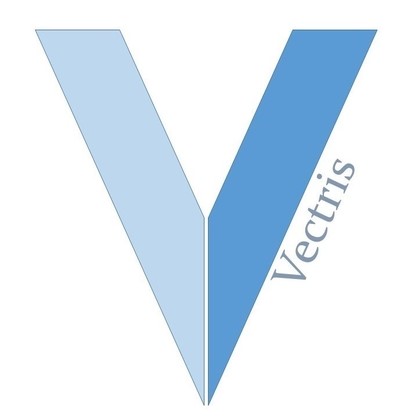Our Thinking
CRM Themes
Customer Relationship Management (CRM) platforms have traditionally been split into three broad areas of functionality: sales (the original use, mainly for lead management), marketing, and customer service. This, however, is an internal functional approach and can often lead to a mind-set of CRM being used in isolated areas and mainly to monitor and control internal activities, often with little consideration of the end customer. The customer can become regarded as simply a piece of data to process in a set of tasks, or an item on a prospect pipeline. In turn this limits the usefulness of CRM and can often lead to it developing a poor reputation with employees who cannot see the value and view it as an overhead taking time to update and maintain.

A far more useful way of looking at CRM is thinking of it as a central investment in improving customer experience, with seven goals:
1. Customer Advocacy – CRM is the customer voice in your processes
Although seemingly obvious, using CRM as the core component in truly understanding your customers is often merely talked about rather than truly actioned. The simple truth is that this goal alone, if implemented correctly, will more than pay for CRM investment and has the potential to truly revolutionise your customer experience influence. There are three key sub-themes to explore:
· Do you have, or have planned, a Single View of the Customer (SVC)? I have yet to find an organisation that has truly achieved this, however a reasonable target is at least an integrated view that pulls the essential information together whether for marketing, selling or post-sales service will bring huge benefits. This is the core requirement – and benefit – of any well-designed CRM investment. It is not an easy task to create a reasonably accurate SVC, and it will never be perfect, however this underpins all other benefits.
· Customer journey insights – the SVC may provide the static information on customer history and details, but how they interact is equally important and CRM can really help with designing and realising a great customer journey. Many CRM systems can help with designing a journey, also tracking and assisting in that journey with data provision. Think of CRM as the “tour guide” of your customer’s journeys through any part of your organisation, it should be able to simultaneously inform the customer and track where they are, resolving any difficulties encountered.
· Customer satisfaction measures – a well-designed CRM platform can be of real value in measuring customer satisfaction, and more importantly, taking action to improve this. By doing so it closes the loop on the experience and allows helpful feedback to improve services
2. Keeping in touch during the Journey
Understanding your customer, although critical for success, is not enough. How to engage with them at any stage in their relationship with you can be enhanced with relevant, timely and focused communication. Just a few years ago this was an advanced (yet both limited and expensive) feature, now it is an essential, effective and expected aspect of customer relationships.
· Personalisation, or a “segment of one” can be achieved with many of the better CRM providers. By using intelligent channel listening and actionable insights gathered from past interactions plus sentiment analysis, a cross-channel personalised experience can be obtained, presenting the most appropriate message, insight or action at the right time for each customer. This can significantly increase sales and improve experience as a result.
· Segmentation – although true personalisation is the goal for many marketing organisations, flexible and responsive segmentation will go a long way to achieving this in a cost-effective manner. Today, active segmentation and frequent updates based on gathered intelligence from multiple channels is proving to be the most effective.
· Sales lead management – long regarded as the core of any CRM platform, it is important to realise that this is most effective when properly connected with effective pre-sales marketing and post-sales customer service. Sales teams can gain hugely valuable insight by enabling directed and relevant contacts with their prospects, often linked with second and third party enhanced data to allow a customised conversation that relates to their prospects.
3. It’s not all about sales…
Often regarded as a distinct functional area from sales and marketing in an organisation, the provision of excellent customer service can today only be achieved by implementing a CRM system that provides the flexibility, insight and speedy reaction to events that customers, both B2B and B2C, now demand.
· Channel connectors: Today, being unaware of or unable to serve any channel that the customer may use is no longer an acceptable omission. Joining these effectively to present a Single Resolution for the Customer using Chatbot, social media as well as traditional routes (phone, email etc.) is essential.
· Cross-functional escalation of customer issues – customer service is not only the job of the Customer Service team! All parts of the organisation must be able to assist and only CRM implementations can achieve this effectively, with the customer at the heart of all actions.
· Knowledge management / self-help – with increasing use of artificial intelligence, self-serve knowledge management is a major trend for 2022. Many organisations are finding that an increasing part of their customer service load is being taken by self-serve routes, not only reducing cost to serve but increasing customer satisfaction.
4. Structuring your Customer-Centric Organisation
If it is accepted that a CRM investment can do much more than lead management and basic marketing and service functions, the split between CRM and ERP (the underlying technology that runs an organisation) can begin to blur. A truly customer-centric organisation can only function if their operating model is also customer centric- it takes more than good customer data (SVC) and good intentions – organisation design is key:
· Orchestration – workflow management, next best actions, resolution path management are all features that CRM can co-ordinate without relying on external workflow management tools that duplicate features and require additional investment.
· Forecasting – intelligent forecasting is based mainly on customer insight. This relates past activities to a more reliable view of potential future actions. It can work as well with unknown (future) customers by gathering anonymous contact data and projecting propensity to engage as well as with a known customer base.
· Scheduling – field sales forces, customer service operations and marketing campaign scheduling all can be scheduled more effectively with a customer-centric CRM platform.
5. Data, Automation and Workflow Relevance
CRM success is heavily dependent on the underlying customer data being in place, accessible, relevant and timely. This links directly with effective automation – this is often only possible when accurate data is available (otherwise reverting to human intervention to resolve) – and allows control of workflow with intelligent routing
· Fit to ERP environment, cloud, simplification – a good CRM platform must fit closely with other systems in the organisation. Most today are cloud based, it would be rare indeed to commence a new implementation on premise for all but the most specialised needs.
· Marketing, sales and service workflows – being joined-up with all workflows is critical to a superior customer experience. Make sure that your CRM platform choice can achieve this.
· Skills based routing – the best CRM platforms will allow skills based routing for customer service interactions.
6. Efficiency and Cost Reduction
The business case for investment in CRM is not only around improving customer experience – indeed in many cases this will not be quantified at all (the subject of another article as is it a very important topic). There are several broad areas for justifying investment based on:
· Technical debt reduction – almost all organisations will have some form of legacy CRM in place. The elimination of ageing systems and ability to rationalise complex operations that may be burdened with high cost maintenance will be of real help.
· Channel activity connection, cost to serve reduction – as the migration to digital channels continues, CRM can become the “brain” of operations to orchestrate outbound customer marketing and inbound contacts.
· Partner performance reporting – essential to optimise third part costs.
7. Enhanced Usability, Analytics and Reporting
The final area of investigation for CRM value is around the interface with users and the ability to provide useful reporting and analytics. This may be achieved using external reporting systems but most good CRM providers build in truly insightful reporting and predictive analytics. Things to look out for are:
· User interface, ease of use and intuitive navigation – it is now expected that ease of use is a given and a drastic reduction in the amount of required training is now normal assuming that the interface can be as intuitive and natural as possible.
· Completeness of analytics and reporting needs – consideration should be given to the business relevance of the reporting suite, it is very important to limit the reports to those that are really adding value to business decisions.
These seven areas are not exhaustive but cover the most important elements to consider when making an investment, or re-investing, in CRM.
